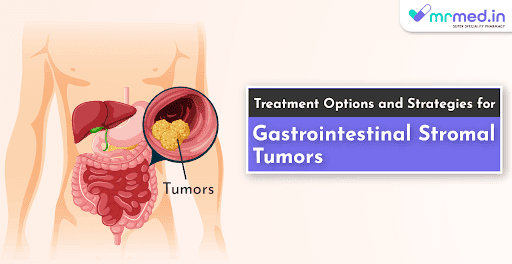
Treatments and Strategies for Gastrointestinal Stromal Tumors
Gastrointestinal stromal tumours (GISTs) are uncommon tumours that develop from the interstitial Cajal cells, which control gastrointestinal tract motility. The stomach and small intestine are the most typical sites for GISTs, though they can develop anywhere throughout the digestive tract. GIST treatment necessitates a multidisciplinary strategy, taking into account variables such tumour size, location, mutation status, and patient-specific traits. We shall examine the available GIST therapy options and approaches in this post.
1. Surgical Resection
The cornerstone of treatment for localised GISTs continues to be surgical excision. The main objective is to completely remove the tumour with unblemished margins. Surgical debulking may be used to lessen tumour burden when total resection is not possible due to tumour size, location, or the presence of metastases. Laparoscopic or robotic-assisted surgery, for example, has demonstrated equivalent results to open surgery while providing benefits including a shorter hospital stay and a quicker recovery.
2. Tyrosine Kinase Inhibitors (TKIs)
TKIs (Tyrosine Kinase Inhibitors) are a class of targeted therapies that have revolutionized the treatment of various cancers, including gastrointestinal stromal tumors (GISTs). One of the most well-known TKIs used in GIST treatment is imatinib. Imatinib specifically targets the mutated form of the KIT receptor, which is found in the majority of GIST cases. By blocking the activity of this mutated receptor, imatinib effectively inhibits the growth and division of GIST cells. Glivec 400mg Tablet containing imatinib have demonstrated astounding effectiveness in reducing tumour growth, enhancing progression-free survival, and extending overall survival.
3. Local Ablation Techniques
Local ablative treatments like radiofrequency ablation or cryoablation can be taken into consideration for patients with a small tumour burden or a localised recurrence. With these methods, tumour cells are killed off utilising heat or cold, respectively. They can control local disease and are less invasive operations that can be carried out intravenously or during surgery.
4. Watchful waiting
In some cases, small GISTs that are not causing significant symptoms or growing rapidly may be closely monitored through regular imaging tests. This approach is known as watchful waiting, and treatment may be initiated if the tumor shows signs of progression.
5. Clinical Trials and Emerging Therapies
Novel therapeutic modalities for GISTs are being investigated in several active clinical trials. These consist of immune checkpoint inhibitors, combination therapy, and targeted medicines that attack resistance pathways. Additionally, research is concentrating on locating predictive biomarkers and creating individualised treatment plans.
Conclusion
In recent years, there has been a considerable change in the therapeutic options available for gastrointestinal stromal tumours. Tyrosine kinase inhibitors have revolutionised the care of advanced or metastatic GISTs, however surgical resection is still essential for treating locally advanced illness. The right medicine must be chosen with consideration for mutation analysis. The outcomes for patients with GISTs are expected to improve as a result of ongoing research and clinical studies, which present potential directions for future improvements in treatment options and tactics. For individualised patient care and improving treatment outcomes, a multidisciplinary strategy comprising surgeons, medical oncologists, and other specialists is crucial.
Appreciate the creator